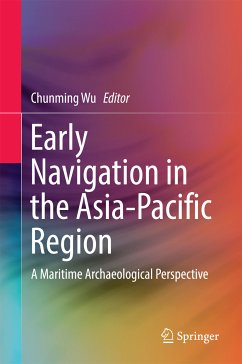
The Archaeology, History and Heritage of WWII Karst Defenses in the Pacific (eBook, PDF)
Cultures of Conflict
Versandkostenfrei!
Sofort per Download lieferbar
72,95 €
inkl. MwSt.
Weitere Ausgaben:

PAYBACK Punkte
36 °P sammeln!
This book is an archaeological study of the cultures of conflict through an examination of caves and tunnels used during the Pacific War. Referred to here as "karst defenses," WWII caves and tunnels can be found throughout the karst landscapes of the Pacific. Karst defenses have been hidden, literally by the jungle and figuratively by history, for over 70 years.Based on a study of karst defenses and their related artifacts and oral histories in Saipan, Commonwealth of the Northern Mariana Islands, this book uses karst defenses to investigate the varied human experiences before, during and afte...
This book is an archaeological study of the cultures of conflict through an examination of caves and tunnels used during the Pacific War. Referred to here as "karst defenses," WWII caves and tunnels can be found throughout the karst landscapes of the Pacific. Karst defenses have been hidden, literally by the jungle and figuratively by history, for over 70 years.
Based on a study of karst defenses and their related artifacts and oral histories in Saipan, Commonwealth of the Northern Mariana Islands, this book uses karst defenses to investigate the varied human experiences before, during and after the Pacific War. Historically, the book reveals new knowledge about the overall defense strategies used in the Pacific. Karst defenses were a central component of Pacific War defense and were constructed and used by civilians, the Japanese military and U.S. troops as early as 1942. Karst defenses also functioned as command posts, hospitals, shelters, storage units and combat positions.
The book sheds light on the social aspects that influenced the construction and use of karst defenses, including the fragmented relationship between the Imperial Japanese Navy and the Imperial Japanese Army, the social status of civilians under Japanese rule and the clandestine plans of the U.S. in Micronesia. The book also discusses the complex contemporary meanings of this dark, shared heritage.
Based on a study of karst defenses and their related artifacts and oral histories in Saipan, Commonwealth of the Northern Mariana Islands, this book uses karst defenses to investigate the varied human experiences before, during and after the Pacific War. Historically, the book reveals new knowledge about the overall defense strategies used in the Pacific. Karst defenses were a central component of Pacific War defense and were constructed and used by civilians, the Japanese military and U.S. troops as early as 1942. Karst defenses also functioned as command posts, hospitals, shelters, storage units and combat positions.
The book sheds light on the social aspects that influenced the construction and use of karst defenses, including the fragmented relationship between the Imperial Japanese Navy and the Imperial Japanese Army, the social status of civilians under Japanese rule and the clandestine plans of the U.S. in Micronesia. The book also discusses the complex contemporary meanings of this dark, shared heritage.
Dieser Download kann aus rechtlichen Gründen nur mit Rechnungsadresse in A, B, BG, CY, CZ, D, DK, EW, E, FIN, F, GR, HR, H, IRL, I, LT, L, LR, M, NL, PL, P, R, S, SLO, SK ausgeliefert werden.












